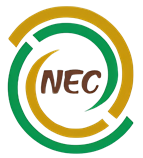Peer Social Support Enhances a Student's Motivation to Engage in Studying
DOI:
https://doi.org/10.64008/GPEJ.v1i1.7Keywords:
social support, peer, learning motivation, peer interaction, teachers keyAbstract
This study was carried out at SMPS IT AL-HUSNA, located in the Siak Hulu district of Kampar, Indonesia. The research focused on students in the ninth grade and aimed to examine the impact of peer social support on students' willingness to learn. This research employs a quantitative strategy utilising the correlation approach. A questionnaire was distributed to 120 students to gather responses. Some students continue to experience a lack of social engagement with their peers, leading to feelings of loneliness and isolation. This generates a perception of disparity among classmates, which has a negative impact on the student's motivation to learn, leading to a decrease in their learning drive. The decline in motivation serves as a significant indicator for the necessity of fostering peer-to-peer comprehension in order to effectively engage in interactions both within and beyond the classroom, encompassing intellectual, social, and behavioural aspects. Enable the instructor to offer assistance in promoting comprehension, as well as implementing strategies to enhance peer involvement, motivation, and opportunities for future student achievement. Descriptive statistical analysis is employed to characterise respondent profiles and address research inquiries by quantifying the mean and standard deviations. The determination coefficient value of 78% demonstrates a substantial influence of peer social support on student learning motivation. It signifies that as the level of social assistance from peers rises, the level of motivation among pupils to acquire knowledge would also increase. Facilitating teachers in fostering peer-to-peer engagement through interactive activities among students will enhance motivation in classroom learning.
References
Abildina, S., Sardarova, Z., Ozgambayeva, R., Janzakova, S., Kalykbayeva, A., Bitikova, A & Abdol, E. (2023). The effect of variables associated with the digital learning environment on students' motivation and attitudes. International Journal of Education in Mathematics, Science, and Technology (IJEMST), 11(6), 1497-1517. https://doi.org/10.46328/ijemst.3781.
Ames, C. (1992). Classroom: Goals, structures and student motivation. Journal of Educational Psychology, 84, 261-271. doi:10.1037/0022-0663.84.3.261.
Bacchus, R & Wallace, J. (2024). Peer assessment using student co-designed rubrics. Creative Education, 15, 164-177. https://doi.org/10.4236/ce.2024.152009.
Battle, L & Diab, D. L. (2022). Is envy always bad? An examination of benign and malicious envy in the workplace. Psychological Reports, 0(0). https://doi.org/10.1177/00332941221138476.
Bhardwaj, P. (2019). Types Of Sampling in Research. J Pract Cardiovasc Sci 2019; 5:157-63.
Bouchkioua, Z & Mokhlesse, L. (2021). Motivation to Learning: Toward Achievement. Psychology, 12, 462-476. https://doi.org/10.4236/psych.2021.123029.
Darling, H. S. (2022). Do you have a standard way of interpreting the standard deviation? a narrative review. Cancer Research, Statistics, and Treatment 5(4):p 728-733, Oct–Dec 2022. https://doi.org/10.4103/crst.crst_284_22.
Feng, Z. L. (2023). The function and application of peer groups in college ideological and political education. Open Journal of Social Sciences, 11, 298-304. https://doi.org/10.4236/jss.2023.118020.
Gay, L. R & Diehl, P. L. (1992). Research methods for business and management. in hill, r. (1998). what sample size is ‘enough’ in internet survey research? Interpersonal Computing and Technology: An electronic Journal for the 21st Century.
Gyamlani, M. (2023). Revolutionizing peer support for children with chronic illness leveraging technology. Psychology, 14(10), 1644-1650. https://doi.org/10.4236/psych.2023.1410095.
Hasanah, A., & Baars, R. C. (2023). Serious games, motivation, and learning: a study on marginalized youth. Creative Education, 14(13), 2747-2776. https://doi.org/10.4236/ce.2023.1413174.
Hari Santoso. (2012). The Influence of Friends of Equal Age on the Motivation of Students of Class X in Man I King Galuh District of Majalengka.
Krejcie, R. V. (1970). Determining sample size for research activities. Educational Psychol Meas.
Lim, L. L. (2014). A case study on peer-teaching. Open Journal of Social Sciences, 2(8), 35-40. http://dx.doi.org/10.4236/jss.2014.28006.
Ma, X. L., Tian, S. M., Luo, S. J & Jiang, X. (2023). Research on the causes and correction strategies of group peer assessment performance bias in online collaboration. Open Journal of Social Sciences, 11, 47-66. https://doi.org/10.4236/jss.2023.117005.
Panji Wicaksono. (2021). Impact of social support of peers in improving motivation to study at Ar-RAHMAN TPQ Jatisawit village Bumiayu district of Brebes, Faculty of Dakwah, State Islamic University Prof. K.H. Saifuiddin Zuhri, Purwokerto.
Qureshi, M. A., Khaskheli, A., Qureshi, J. A., Raza, S. A., & Yousufi, S. Q. (2023). Factors affecting students’ learning performance through collaborative learning and engagement. Interactive Learning Environments, 31(4), 2371-2391. https://doi.org/10.1080/10494820.2021.1884886.
Raifman, S., DeVost, M. A., Digitale, J. C., Chen, Y. H., & Morris, M. D. (2022). Respondent-driven sampling: a sampling method for hard-to-reach populations and beyond. Current Epidemiology Reports, 9(1), 38-47. https://doi.org/10.1007/s40471-022-00287-8.
Ratih Anjaswari. (2021). Relationship between social support friends of equal age with school well being students, Pekanbaru, Faculty of Psychology, Islamic University of Riau.
Rizka Adinda. (2018). The role of peer friends in motivating students of the 12th grade at AL-MUSLIMIN High School, Bekasi.
Springer, L., Stanne, M & Samuel, D. (1999). Effects of small-group learning on undergraduates in science, mathematics, engineering, and technology: a meta-analysis. Review of Educational Research, 69, 21-51. http://dx.doi.org/10.3102/00346543069001021.
Tito Hidayanti. (2016). Relationship of Social Support Friends of Equal Age with Motivation Students of Class VII MTS Al-YASIN Pasuruan, Skripsi, Faculty of Psychology, State Islamic University of Maulana malik Ibrahim, Malang.
Wang, Y. (2023). Motivation of Chinese medical students in learning english as a second language: A quantitative study. Creative Education, 14(7), 1358-1369. http://dx.doi.org/10.4236/ce.2023.147086.
Xiong, X. (2022). Critical review of quantitative and qualitative research. In 2022 3rd International Conference on Mental Health, Education and Human Development (MHEHD 2022) (pp. 956-959). Atlantis Press. http://dx.doi.org/10.2991/assehr.k.220704.172.
Wentzel, K. (2020). Motivating students to learn. Routledge.
Downloads
Published
Issue
Section
License
Copyright (c) 2025 Najmi Hayati, Muhamad Ismail, Pardi Zukri (Author)

This work is licensed under a Creative Commons Attribution 4.0 International License.





